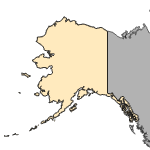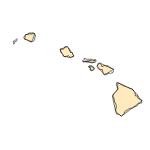Coregonus wartmanni
(blaufelchen)
Fishes
Exotic |
|
Common name: blaufelchen
Synonyms and Other Names: (lavaret, whitefish).
Taxonomy: available through
www.itis.gov
Identification: Kottelat and Freyhof (2007) provide a description and characters for separating C. wartmanni from other species of sympatric Coregonus.
Size: to 450 mm SL
Native Range: Lake Constance; Austria, Germany, and Switzerland (Kottelat and Freyhof 2007).



|

Alaska |

Hawaii |

Puerto Rico &
Virgin Islands |

Guam Saipan |
Hydrologic Unit Codes (HUCs) Explained
Interactive maps: Point Distribution Maps
Nonindigenous Occurrences:
Several shipments of "C. albula" eggs were received between 1884 and 1886 (Smiley 1885b; Baird 1889; Bean 1892a). Some, or all, of these fish were likely C. wartmanni, especially those that were derived from hatcheries on Lake Constance (Todd 1983). Thousands of hatched young from these eggs were stocked in Heart Pond and Lake Hebron, Maine (Smiley 1885; Baird 1889; Bean 1892; Todd 1983). Kendall (1914a) referred to the stocking of "C. albula" in Maine under the name Leucichthys albula.
Table 1. States with nonindigenous occurrences, the earliest and latest observations in each state, and the tally and names of HUCs with observations†. Names and dates are hyperlinked to their relevant specimen records. The list of references for all nonindigenous occurrences of Coregonus wartmanni are found here.
Table last updated 11/21/2024
† Populations may not be currently present.
Means of Introduction: Coregonus wartmanni, or a related species, was intentionally stocked as a food fish. Shipments were imported by the U.S. Fish Commission from Germany in the 1880s (Todd 1983).
Status: The introductions in Maine failed (Kendall 1914).
Impact of Introduction: The impacts of this species are currently unknown, as no studies have been done to determine how it has affected ecosystems in the invaded range. The absence of data does not equate to lack of effects. It does, however, mean that research is required to evaluate effects before conclusions can be made.
References: (click for full references)
Baird, S.F. 1878. Report of the Commissioner of Fish and Fiseries for 1875-1876. Part IV. U.S. Commission of Fish and Fisheries, Washington, DC.
Baird, S.F. 1889. Report of the Commissioner of Fish and Fiseries for 1886. Part XIV. U.S. Commission of Fish and Fisheries, Washington, DC.
Bean, T.H. 1892. Observations upon fishes and fish-culture. Bulletin of the U.S. Fish Commission 10:49-61.
Berg, L. S. 1948-1949. Freshwater fishes of the U.S.S.R. and adjacent countries, 4th edition. Three volumes. Translated from Russian, 1962-1965, for the Smithsonian Institution and the National Science Foundation, by Israel Program for Scientific Translations, Jerusalem, Israel. Volume 1:504 pp.; volume 2:496 pp.; volume 3:510 pp.
Kendall, W.C. 1914. An annotated catalogue of the fishes of Maine. Proceedings of the Portland Society of Natural History 3:1-198.
Kottelat, M., and J. Freyhof. 2007. Handbook of European freshwater fishes. Publications Kottelat, Cornol, Switzerland.
Ladiges, W., and D. Vogt. 1986. Guida dei pesci d'acqua dolce d'Europa. Franco Muzzio & Co Editore, Padova, Italy.
Smiley, C.W. 1885. Notes upon fish and the fisheries. Bulletin of the U.S. Fish Commission 5:465-469.
Todd, T.N. 1983. The feasibility of mass-culturing coregonines in the Great Lakes. Research completion report, U.S. Fish and Wildlife Service, Ann Arbor, MI.
Other Resources:
FishBase Summary
Author:
Matt Neilson, and Pam Fuller
Revision Date: 5/7/2019
Peer Review Date: 2/29/2012
Citation Information:
Matt Neilson, and Pam Fuller, 2024, Coregonus wartmanni (Bloch, 1784): U.S. Geological Survey, Nonindigenous Aquatic Species Database, Gainesville, FL, https://nas.er.usgs.gov/queries/FactSheet.aspx?SpeciesID=888, Revision Date: 5/7/2019, Peer Review Date: 2/29/2012, Access Date: 11/21/2024
This information is preliminary or provisional and is subject to revision. It is being provided to meet the need for timely best science. The information has not received final approval by the U.S. Geological Survey (USGS) and is provided on the condition that neither the USGS nor the U.S. Government shall be held liable for any damages resulting from the authorized or unauthorized use of the information.